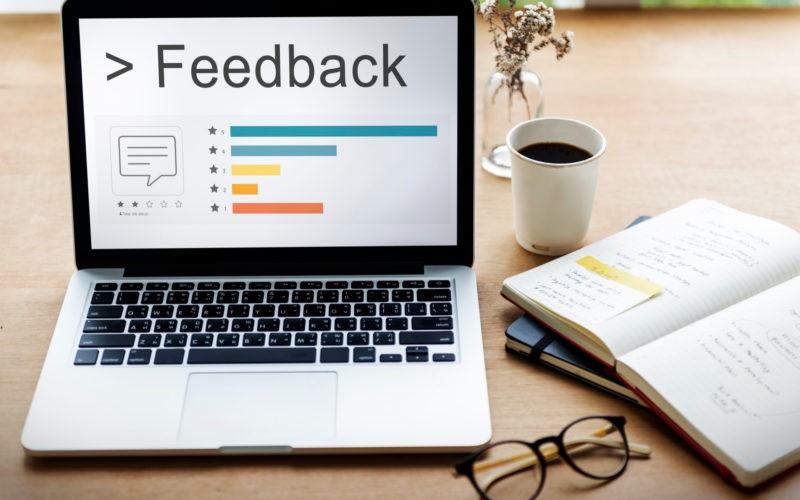Online surveys are still one of the most effective ways to collect feedback, gauge customer sentiment, and conduct market research. But with so many survey platforms available today, choosing the right one can feel overwhelming, especially when you’re balancing usability, integrations, design, and compliance.
This guide explores the top form and survey creation tools, compares key features, and offers practical insights to help you make an informed choice.
🔍 What to Look for in a Survey Tool
When evaluating online survey platforms, consider the following criteria:
- Ease of use — Is the interface intuitive for both creators and respondents?
- Logic and branching — Can you create conditional questions and skip logic?
- Integrations – Does it work with your stack (Google Sheets, Notion, Airtable, Slack, CRM, etc.)?
- Branding and design — Can you customize the survey to reflect your brand?
- Compliance and security — Does it offer GDPR/HIPAA compliance if needed?
- Analytics and reporting — How robust are the insights and export options?
🧰 Top Survey Tools in 2025
1. Google Forms
Best for: Simple internal surveys, education, quick polls
Google Forms remains one of the easiest and most accessible options. It’s free, integrates with Google Sheets, and supports basic logic. Great for teams that just need something that works.
Pros:
- Completely free
- Easy to use
- Real-time Google Sheets integration
Cons:
- Limited design/customization
- Basic logic features only
2. Typeform
Best for: Engaging, visually appealing surveys
Typeform pioneered the conversational survey format — one question at a time — and continues to lead in UX design. It’s ideal for customer feedback, onboarding, and interactive forms.
Pros:
- Beautiful, conversational interface
- Advanced logic and integrations
- Great user experience
Cons:
- Pricing can escalate
- One-question-at-a-time UX may be slower for long surveys
3. Qualtrics
Best for: Enterprise feedback, academic research, predictive analytics
Qualtrics is a powerhouse for advanced survey needs. It’s widely used in academia and large enterprises for its analytical depth and automation capabilities.
Pros:
- Robust logic and branching
- Predictive analytics and AI insights
- Excellent for large-scale and research projects
Cons:
- Overkill for small teams
- Pricing is quote-based and high
4. Jotform
Best for: Form versatility, workflow automation, HIPAA compliance
Jotform offers a powerful drag-and-drop builder with extensive templates and widgets. From registration forms to payment collection, it’s the Swiss Army Knife of form builders.
Pros:
- Advanced widgets and integrations
- HIPAA-compliant plans
- Custom PDF generation and approval workflows
Cons:
- Slightly steeper learning curve
- Can feel bloated for basic use cases
5. Tally
Best for: Notion-style survey creation with simplicity and power
Tally is growing fast thanks to its intuitive interface and generous free plan. If you’re comfortable using Notion, you’ll love how Tally works — it’s like building a doc that turns into a survey.
Pros:
- Works like a Notion doc
- Supports advanced logic (even on free tier)
- Clean UX and embeddable anywhere
Cons:
- Fewer native integrations than older tools
- Limited reporting features
6. Fillout
Best for: Airtable/Notion power users, modern design, speed
Fillout is a sleek, fast-growing survey tool purpose-built for users who rely on Airtable or Notion. It offers real-time sync, advanced branching, and a lightning-fast interface that balances form design and performance.
Pros:
- Native Airtable and Notion integrations
- Beautiful, fast forms
- Advanced conditional logic and calculations
Cons:
- Fewer enterprise features
- Best suited to small/medium teams or startups
7. Microsoft Forms
Best for: Microsoft 365 environments, internal feedback, education
Microsoft Forms is ideal for simple surveys within Microsoft ecosystems. It’s integrated with Excel, Outlook, Teams, and SharePoint, making it perfect for internal polls, quizzes, or training feedback.
Pros:
- Seamless Microsoft 365 integration
- Easy to use and deploy across departments
- Auto-export to Excel for data analysis
Cons:
- Limited design customization
- Fewer logic options than competitors
📊 Survey Tool Comparison Table
| Feature | Google Forms | Typeform | Qualtrics | Jotform | Tally | Fillout | Microsoft Forms |
|---|---|---|---|---|---|---|---|
| Ease of Use | ⭐⭐⭐⭐⭐ | ⭐⭐⭐⭐⭐ | ⭐⭐⭐ | ⭐⭐⭐⭐ | ⭐⭐⭐⭐ | ⭐⭐⭐⭐ | ⭐⭐⭐⭐ |
| Advanced Logic | Basic | ✅ | ✅✅ | ✅✅ | ✅ | ✅✅ | Basic |
| Customization | Limited | High | High | High | Moderate | High | Limited |
| Integrations | Google Suite | Extensive | Enterprise | Extensive | Notion | Airtable | Microsoft 365 |
| Pricing Model | Free | Freemium | Quote-Based | Freemium | Free | Freemium | Included in M365 |
| HIPAA Compliance | ❌ | ✅ (Ent.) | ✅ | ✅ | ❌ | ✅ (Pro) | ✅ (with M365 E5) |
| Key Differentiator | Simplicity | UX | Analytics | Versatility | Notion UX | Speed | M365-native |
✅ Best Practices for Survey Design and Feedback Analysis
Even the best tool won’t fix a poorly designed survey. Follow these best practices to improve data quality, response rates, and insight extraction.
1. Design Smarter Questions
- Choose the right formats: Use multiple choice for clear stats, Likert scales for sentiment, open-ended questions for qualitative feedback, and ranking questions for priorities.
- Be specific: Avoid vague terms like “often” or “usually.” Use precise timeframes and context.
2. Avoid Common Pitfalls
- Leading questions: Avoid wording that suggests a “correct” answer.
- Double-barreled questions: Don’t combine multiple ideas in one question (e.g., “How satisfied are you with our product and support?”)
- Survey fatigue: Keep it short. Prioritize critical questions and consider optional sections.
3. Analyze and Act on Results
- Segment smartly: Break down responses by audience type, time period, or funnel stage.
- Spot trends and outliers: Look for patterns and unusual feedback — they often reveal deeper issues or innovation areas.
- Close the loop: Share key takeaways with respondents or stakeholders to build trust and encourage future participation.
🤖 The Rise of AI in Survey Tools
Survey platforms are increasingly integrating AI to enhance data collection and interpretation. Here’s how:
- Auto-generated questions: Some tools now help draft relevant questions based on your goal.
- Sentiment analysis: AI can interpret open-ended responses for tone and emotion.
- Drop-off prediction: Platforms like Qualtrics use machine learning to forecast where users abandon surveys and suggest fixes.
- Smart summaries: AI can generate quick summaries of trends, clusters, and top concerns.
These advancements are making surveys smarter, faster, and more actionable.
🧠 Final Thoughts
The best survey tool depends on your team’s needs, your audience, and your workflow. For quick internal polls inside the Microsoft ecosystem, MS Forms is a solid choice, while Google Forms or Tally are great for broader use. For rich customer experiences, Typeform or Fillout shine. And for large-scale data or academic research, Qualtrics and Jotform offer unmatched depth.
No matter which platform you choose, strong design and thoughtful analysis are what turn answers into actionable insight.












